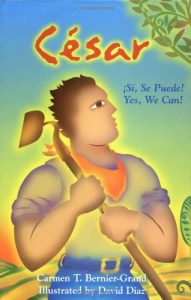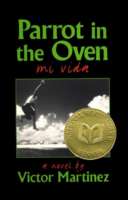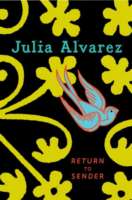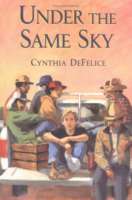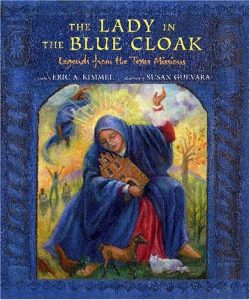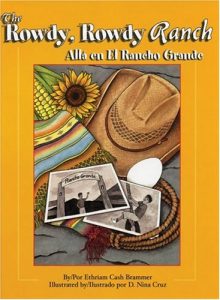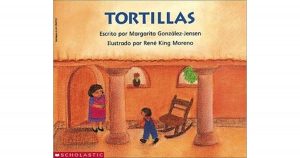After helping her grandfather plant squash, onions, carrots, cabbage, and other vegetables that her mother uses in soups and salsas, seven-year-old Marisol plants sunflower seeds in her neighbors’ yards, and weeks later, everyone gets to enjoy the fruits of Marisol’s labor.
”My name is Marisol. I’m seven years old. This spring, I helped my grandfather make a garden.” First, Marisol and her grandfather had to prepare the ground. They pulled out the old plants and weeds. They mixed up all the dirt ”to make it soft.” Then it was time to plant the seeds. They planted seeds to grow the vegetables Mama uses in soup squash, onions, carrots, and cabbage. They planted seeds to grow the things she needs to make salsa garlic, tomatoes, cilantro, and chili peppers. They planted mint for Abuela’s tea. They planted watermelon seeds for Marisol and her brother. And for Grandad, they planted sunflower seeds because their ”big black eyes with long yellow eyelashes” make him happy. And he likes to eat the seeds! One day, Marisol’s grandfather gives her a small bag of sunflower seeds, but instead of eating them she plants them here and there one in the corner of Mrs. Sosa’s yard, another in Mr. Binh’s yard. In fact, as she walks to school, she plants seeds in the corners of all the yards she passes. And she plants the last three seeds in the playground at school. As the days pass, sometimes it’s rainy and sometimes it’s sunny. Finally, one bright day, Marisol’s sunflower surprise shines a bit of happiness all around. The tender relationship between grandparent and grandchild is illuminated in this children’s book by author Gwendolyn Zepeda with warm illustrations by Alisha Gambino. Children ages 3-7 will sow and reap ideas of their own about ways to share a little joy, just as Marisol does with sunflowers.


